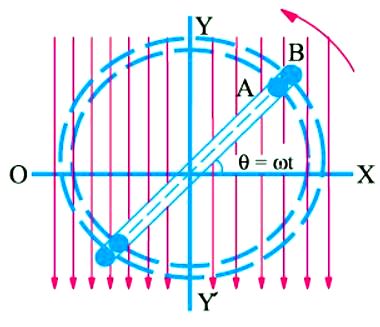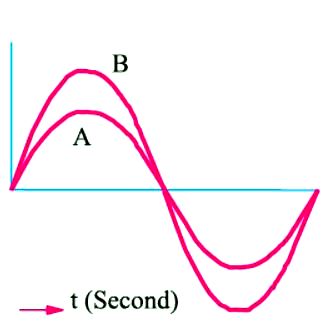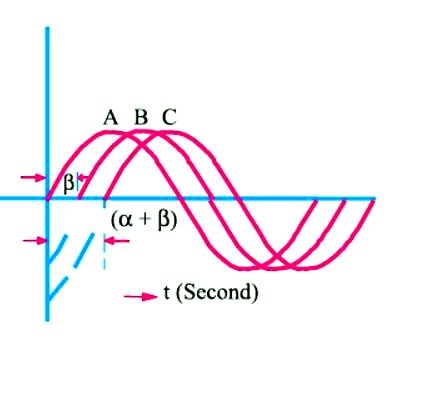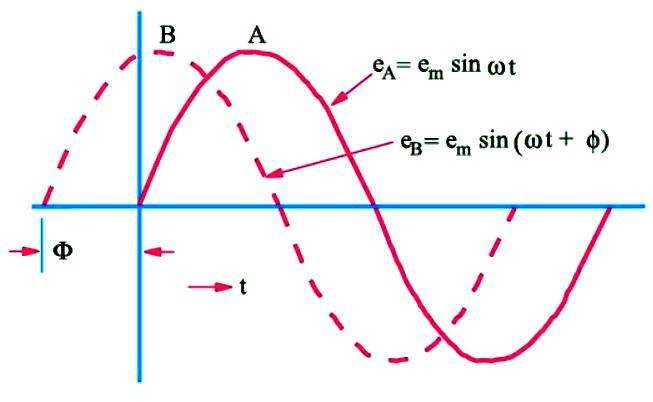Phase and Phase Difference
Phase and Phase Difference :
By phase of an alternating current is meant the fraction of the time period of that alternating current which has elapsed since the current last passed through the zero position of reference. For example, the phase of current at point A is T/4 second, where T is time period or expressed in terms of angle, it is π/2 radians (Figure A). Similarly, the phase of the rotating coil at the instant shown in Figure (A) is ωt which is, therefore, called its phase angle.



In electrical engineering, we are, however, more concerned with relative phase and phase difference between different alternating quantities, rather than with their absolute phases. Consider two single-turn coils of different sizes [Figure (B)] arranged radially in the same plane and rotating with the same angular velocity in a common magnetic field of uniform intensity. The e.m.fs. induced in both coils will be of the same frequency and of sinusoidal shape, although the values of instantaneous e.m.fs. induced would be different. However, the two alternating e.m.fs. would reach their maximum and zero values at the same time as shown in Figure (C). Such alternating voltages (or currents) are said to be in phase with each other. The two voltages will have the equations
e1 = Em1 sin ω t and e2 = Em2 sin ω t
AdBlock-2
Phase Difference :
Now, consider three similar single-turn coils displaced from each other by angles α and β and rotating in a uniform magnetic field with the same angular velocity [Figure (D)].
In this case, the value of induced e.m.fs. in the three coils are the same, but there is one important difference. The e.m.fs. in these coils do not reach their maximum or zero values simultaneously but one after another. The three sinusoidal waves are shown in Figure (E). It is seen that curves B and C are displaced from curve A and angles β and (α + β) respectively. Hence, it means that phase difference between A and B is β and between B and C is α but between A and C is (α + β). The statement, however, does not give indication as to which e.m.f. reaches its maximum value first. This deficiency is supplied by using the terms ‘lag’ or ‘lead’.
A leading alternating quantity is one which reaches its maximum (or zero) value earlier as compared to the other quantity. Similarly, a lagging alternating quantity is one which reaches its maximum or zero value later than the other quantity. For example, in Figure (E), B lags behind A by β and C lags behind A by (α + β) because they reach their maximum values later.



The three equations for the instantaneous induced e.m.fs. are (Figure (F))
eA = Em sin ωt ……………………………………. reference quantity
eB = Em sin (ωt − β)
eC = Em sin [ωt − (α + β)]
In Figure (F), quantity B leads A by an angle φ. Hence, their equations are
eA = Em sin ωt …………………………….. reference quantity
eB = Em sin (ωt − φ)
A plus (+) sign when used in connection with phase difference denotes ‘lead’ whereas a minus (–) sign denotes ‘lag’.
Read article – Sinusoidal Waves
Visit NCERTplanet.com for NCERT solutions and Textbook downloads




